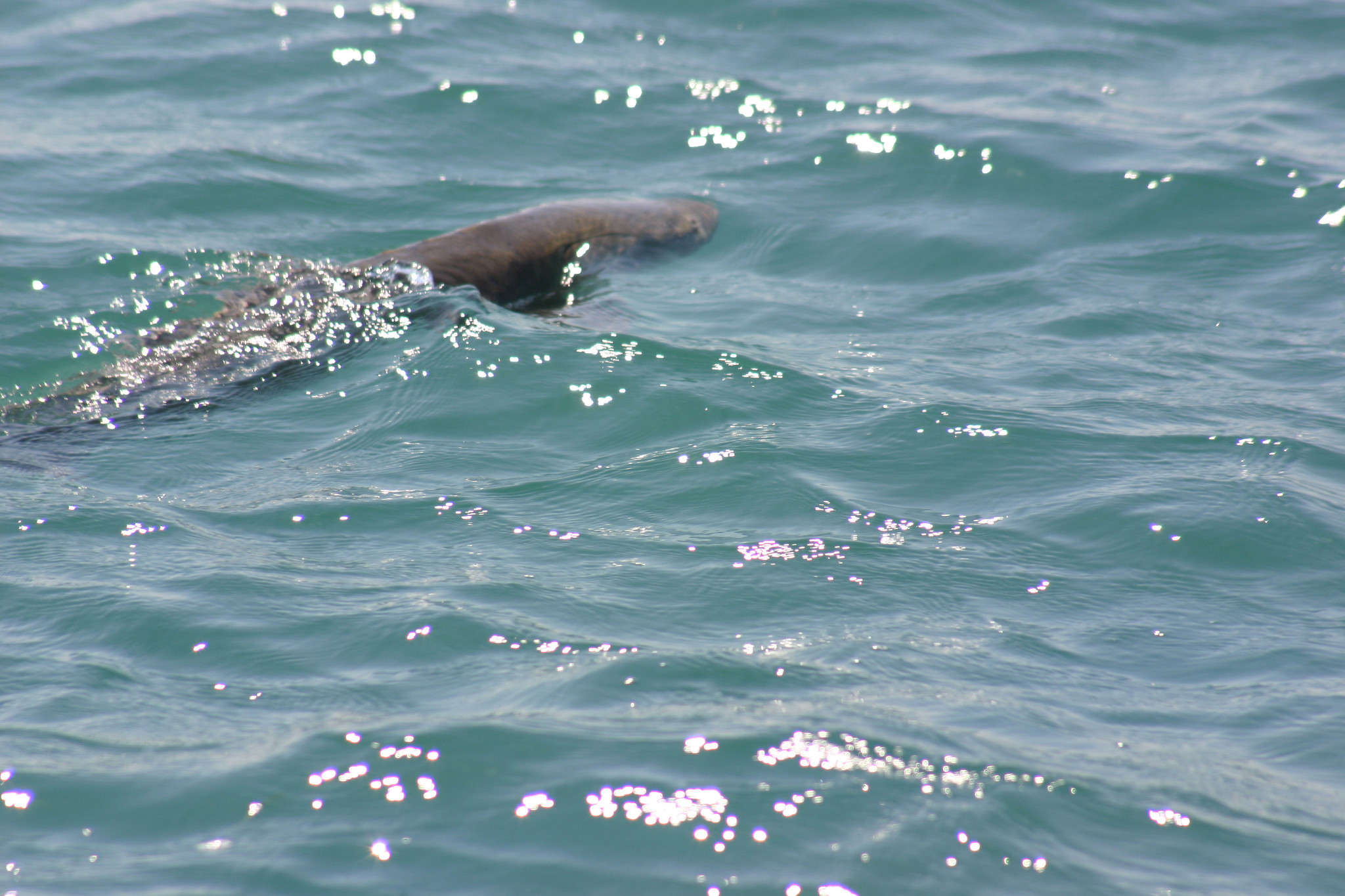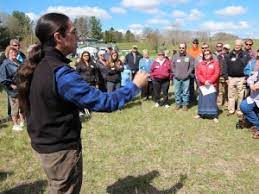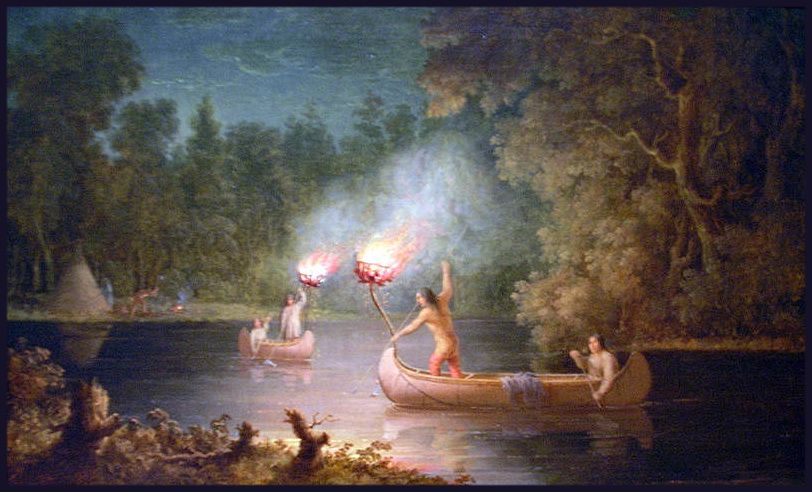
The brief Black Lake sturgeon season which garners so much attention each year is over, but not for everyone.
The public face of the season usually begins and ends on a bitter-cold Saturday morning after six anglers spear their fish. After that, it’s over for citizens of Michigan and other states who travel for the opportunity to catch a big, long, tasty prehistoric fish. Everyone goes home and, if they wish, returns the next year to try again for the biggest of the Great Lakes fishes.
In the meantime, citizens of five sovereign Tribal nations wait for warmer weather and easier access before they go out to harvest their half of the year’s sturgeon, because they can.
And because that’s how it was done for centuries.
Strife between Michigander outdoors enthusiasts and Michigan Tribal members mostly ended with the affirmation of a major historical treaty and a subsequent consent decree governing both sides.
The 1836 Treaty of Washington was signed when the federal government purchased land from Ottawa and Chippewa Indian tribes of what is now the upper Lower Peninsula and the eastern Upper Peninsula of Michigan. The treaty offered tribes the opportunity to stay on the land until it was needed for settlement and also the right to hunt, fish and gather on the land and waters, a total of approximately 13.8 million acres, until it was settled. Although it provided rights to fish on the Great Lakes, it wasn’t until 1979 that a U.S. District Court ruling affirmed tribes still reserved their right to fish in the Great Lakes. That ruling was re-negotiated in 2000 and is being re-negotiated again this year. But it did not address inland hunting, fishing and gathering.
During the 1970s, conflict between Michigan officials, Tribe members and the sporting public was a constant thread in the outdoors world. Tribes believed they still retained rights to fish, hunt and gather on about 37% of Michigan’s inland acreage guided by their own rules and enforcement. Many others believed not.
Tribes adopted their own fishing and hunting regulations, then put them into practice. In 2003 Michigan filed a federal court claim against the tribes, though they negotiated a settlement before trial. The result of that settlement is the 2007 Inland Consent Decree. The ICD is a legal document that defines the extent of Tribal rights and describes how the state of Michigan and the tribes will work cooperatively to manage natural resources.

Doug Craven speaks at a Maple River dam removal project kick-off. Craven is a wildlife biologist and oversees the Little Traverse Bay Bands of Odawa Indians’ natural resources operations. (Photo provided by Conservation Resource Alliance)
“We have treaty rights in all or portions of 38 Michigan counties,” explained Doug Craven, a member of the Little Traverse Bay Bands of Odawa Indians. “The 2007 Decree is an agreement on how to manage the inland resources. So those two decrees really dictate how we cooperatively manage the resources and if there’s limited resources such as certain game species or fish in the Great Lakes, it has a mechanism for us to divide those and share them.”
Members of the Sault St. Marie Tribe of Chippewa Indians, Bay Mills Indian Community, Grand Traverse Band of Ottawa and Chippewa Indians, Little Traverse Bay Bands of Odawa Indians and the Little River Band of Ottawa Indians have their own way of doing things, and it includes their own wildlife biologists, wildlife officers and hatcheries.
Craven is familiar with affairs between Tribes and the state – he has to navigate them as he oversees his Tribe’s natural resources department. And he said, it can be complicated.
“It takes a lot of coordination to work on natural resources. Between Michigan, the U.S. Forest Service, private conservancies and citizens it takes a lot of folks to get together and try to get on the same page,” he said. “Deer, wildlife, they don’t respect boundaries per se, they kind of go where they need to. It has been a challenge over the years building a relationship with the state of Michigan to cooperatively manager these natural resources. Between Michigan governors, MDNR and other staff, getting treaty rights recognized and getting them on-board to be supportive has been a work in progress over the years.”
MDNR personnel work closely with Indian fisheries biologists with the help of a Tribal Coordination Unit. Whether assessing commercial fish species or assessing inland species, the two groups work cooperatively in tagging fish, modeling populations and evaluating fish growth, mortality and recruitment.
Tribal conservation efforts incorporate traditional and modern knowledge
Spearing a big fish is more than a few hours on the ice in a big shanty.
“Per our 2007 ICD, our Tribes will share sturgeon to be harvested, and that’s spread between five Tribes. Little Traverse Bay, we get one fish,” Craven said. “So our way, we did a lottery, and we selected seven different people, and they’ll be able to go out and they can go through the ice. We had one person that was interested and participated in the state season, but he wasn’t successful. Our season is a longer season that allows for soft water harvest, so our guys will go out in the spring, at ice-out when fish are staging and more than likely will harvest from a boat with a spear.”
Craven said as soon as the sturgeon is taken from the shallow river waters, the six other Tribal members also on the prowl will be notified immediately via text message. That will conclude the 2021 sturgeon season for the Little Traverse Bay Band. Simple and efficient is how he described the Tribal sturgeon philosophy.
“I think that’s a key difference in how we look at harvest compared to the state guys or non-Tribe individuals,” he said. “Traditionally, our members have always looked at harvesting a resource with the least amount of effort. It’s not based on the thrill of the chase or spending hours out on the ice or on a charter boat.”

Native Americans have been harvesting natural resources using time-worn techniques for many centuries. Fishing by Torchlight. Painting by Canadian artist Paul Kane (1810-1871).
An MDNR summary of Black Lake sturgeon management acknowledges historical tribal interactions with the fish, and future plans:
Lake sturgeon management within each tribe is guided by varying documents and traditional philosophies…It is known that sturgeon are a clan animal of Midwest tribes and it is a common traditional belief of Michigan tribes that sturgeon is King of all fish. Sturgeon have historically been harvested by Midwest tribes as a subsistence food source…Tribal regulatory approaches are often grounded in potentially differing contexts based on generations of accumulated traditional ecological knowledge (TEK.)
Tribal management of natural resources utilizes science, just like the MDNR, but also components of tradition. Tribal biologists are often trained at the same universities as their state counterparts.
“But we incorporate a cultural understanding of natural resource management and a little bit in philosophy,” Craven said. “We like to look at it a little bit more holistically, not just looking at fish species or a wildlife species independent of everything, but also trying to incorporate TEK, those traditional philosophies, ideas from membership or Tribal citizens that help control management decisions or directions we may take.”
Natural resource management that is governed politically tends to focus on the short-term, Craven said, but TEK takes a longer, winding road.
“We try to take a seven-generational approach,” Craven said. “So you’re looking at an action or activities now, not just how they’re going to affect this generation, but how they’re going to affect future generations, how they’re going to affect seven generations.”
Even with these differences, Michigan Tribes still incorporate the nuts and bolts of modern Western natural resources management in rearing fish, monitoring ecosystems and enforcing regulations.
Frank Zomer is an inland fisheries biologist with Bay Mills Indian Community, located on the eastern tip of the Upper Peninsula. He helps manage inland streams and lakes, including the St. Marys River, between lakes Superior and Huron.
“We have one inland fisheries biologist and two Great Lakes biologists,” Zomer said. “Our department has grown quite a bit over the last five years. We have a staff of about five or six biologists, a handful of full-time technicians and a couple environmental specialists.”
Bay Mills’ conservation work is wide-ranging, from plants and animals to fisheries, he said.
“My position is fairly different than many state biologists in that I have a lot more flexibility on what I can cover. I do a lot of work with wild rice as well as inland fisheries,” Zomer said. “One right now is an acoustic telemetry study on common carp in St. Marys River and their impact on wild rice restoration.”
Zomer said the popular sportfish walleye gets a lot of attention, including stockings in the St. Marys with fish from the Sault Ste. Marie Tribal hatchery, which introduces about 80,000 each year. Combating invasives like European frogbit and didymo, or rock snot, is an endless chore for traditional wildlife managers.
“Some people even call it moose snot, and it’s becoming a real issue in the St. Marys River rapids, basically covering all the rocky substrate there. Right now we don’t have a really good handle on how much of an issue it really is, but if you imagine everything being covered, spawning substrates especially, it makes sense that it would be a real issue,” he explained. “It’s really taken off in the last five years. No one had any idea it was there or had seen it previous to that.”
In addition to scientists, Tribes also employ enforcers, just like the MDNR. Bay Mills has six full-time conservation officers that oversee inland hunting and fishing as well as members engaged in commercial fishing on the Great Lakes. In total there are about 40 full- and part-time conservation officers between the five tribes.
“We have a full conservation program, so that’s anywhere in the ceded territory,” Craven said. “Little Traverse Bay has three full-time officers and a chief officer. They’re graduates of the federal Indian Police Academy and have arrest powers, those type of things.”
Little Traverse Bay officers issue about 850 fishing and hunting licenses each year.
Related stories on Great Lakes Now:
“Water is life” is the theme of day 1 of protests to shut down Enbridge Line 5
Native Rights: Where Great Lakes Tribes can fish and how much is up for debate
Short Season: Sturgeon spearing plays big role in conservation efforts for the ancient fish
Fishing, hunting and gathering remain part of Tribal life, identity
The percentage of the Tribal population engaged in these traditional outdoors activities is higher than the general public in Michigan, Craven said, and is dearly loved by members of all ages, from the youngest children to the elderly. A fishing license is required at 16 and older, and a hunting license at 10 and older.
“We do an annual harvest report every year, so we have about 4,500 Tribal members and about 1,800 that live on or near the reservation,” he said. “It averages about 19% exercising treaty rights in hunting and fishing compared with the state, probably about 6% – and that’s going down.”
The average Odawa hunter is in their mid-30s, according to Craven, while the average Michigan hunter is in their mid-50s.
“Natural resources has always been a part of Odawa identity and continues to be,” he said. “Tribal members also eat a higher proportion of game and fish than non-members, and so that’s something we also track.”
Craven said the state’s fish advisories concerning mercury, PCBs and other contaminants don’t necessarily work well for Little Traverse Bay, so between fisheries and medical professionals, data and guidance is provided on a hyper-local level.
Gathering is another component of treaty rights, and wild rice is one of the tribe’s ongoing projects.
“From a food-wise standpoint, wild rice is a staple we spend a lot of time on to get re-introduced to the area. We’re certainly not Wisconsin, but there are opportunities here in Michigan for wild rice. As far as food sources, there are wild berries and morel mushrooms,” Craven said. “The other component of our gathering are our traditional fiber artists. They’re gathering birch bark and rushes to make rush mats.”
Some projects may be for making products for sale, he said, and other may be made for more personal, ceremonial reasons. Either way, TEK is always a part of the equation.
Managing many species
“We’re also doing quite a bit of work on species that are just starting to come back, so we’re doing some innovative stuff with fishers and martens,” Craven said. “We’re starting to see some of those in the northern Lower Peninsula, so we’re doing some habitat management. We’ve done some pretty good work with eagles, and we’re looking at building an eagle aviary.”
Lead poisoning in eagles is a major problem on lands Little Traverse Bay manages. Two years ago, Tribal wildlife managers began offering an exchange program for hunters: A free box of copper shotgun shells for each box of lead shells turned in. The lead shot gets used for target practice at an area club, meaning it never ends up in the environment or wild game which eagles may consume.
Michigan Tribes are also cooperatively involved in managing a herd of about a thousand elk which were re-introduced from the Rocky Mountains. They currently have a modest range in the north central Lower Peninsula.
Like most wildlife managers in the Midwest, Little Traverse Bay scientists are working hard to combat chronic wasting disease in white-tail deer and elk. The highly contagious (among the animals) neurological disease is currently found in more than half of U.S. states and four Canadian provinces.
“We had a real good opportunity here in Michigan to snuff that out, but the approach they’ve (MDNR) taken here was in my opinion a little too conservative,” Craven said. “They’re a little bit worried about maybe alienating some hunters in the area, and as a result we might all be paying a price for that, so it’s a big concern for us.”
Catch more news on Great Lakes Now:
Short Season: Sturgeon spearing plays big role in conservation efforts for the ancient fish
Native Rights: Where Great Lakes Tribes can fish and how much is up for debate
Treaty Rights Acknowledged For First Time in Oil Pipeline’s Controversial History
The future of Lake Superior with climate disruption
Featured image: Lake sturgeon in Lake St. Clair (Photo Credit: NOAA Great Lakes Environmental Research Laboratory via Flickr, CC BY-SA 2.0)




